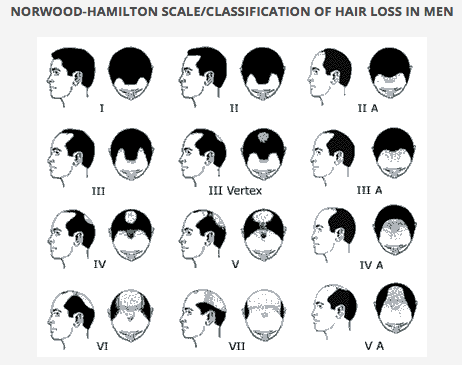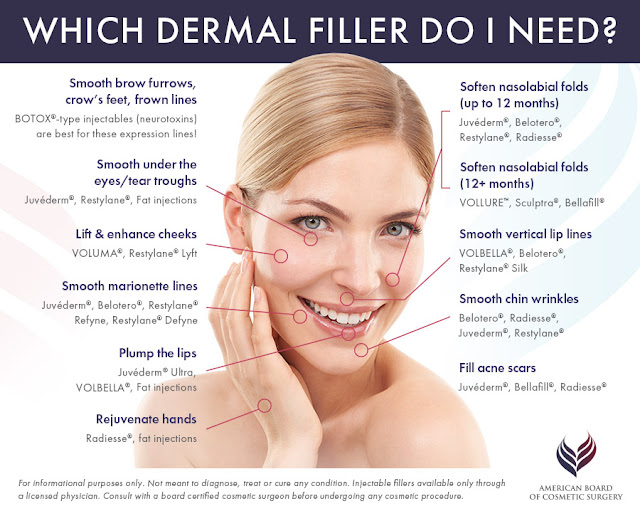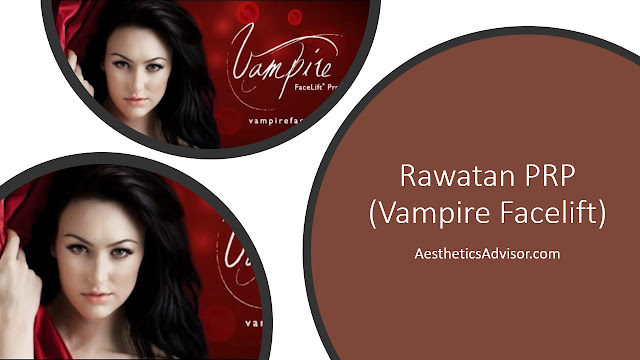Dermal Fillers for the Eyes: Serious Filler-related Complications
Even the best injectors can experience sometimes serious dermal filler-related complications when injecting around the eyes. There are a few important nuances in technique that will not only help reduce complication risk but also improve outcomes. One expert offers his advice in this article.
Editor's Note:
There are too many self proclaimed experts out there. It is getting common for beauty salons and spas to offer injectable treatments such as Botox and dermal fillers to customers who frequent their premises. Please be informed that only trained and qualified medical professionals are authorised to administer injectable treatments like Botox and dermal fillers. The aesthetic physician should also have a license known as LCP (Letter of Privileging and Credentialing) for aesthetic procedures from the Ministry of Health of Malaysia. In order to verify whether your doctor is licensed to do medical aesthetic procedures in Malaysia, you can check whether they have a LCP license over here:
If you need any assistance, free consultation or would like a quote, please feel free to contact us.
Even the best injectors can experience sometimes serious filler-related complications when injecting around the eyes, but there are a few important nuances in technique that not only reduce complication risk but also improve outcomes, according to Robert A. Goldberg, M.D., an oculoplastic surgeon at UCLA’s Jules Stein Eye Institute.
Related: Australian Society of Plastic Surgeons warns fillers can cause blindness
Dr. Goldberg and colleagues found hyaluronic acid fillers generally were well tolerated up to five years in their retrospective review of 147 patients who had received filling in the periorbital hollows, published last year in the Journal of Cosmetic Dermatology.
But short-term complications did occur: 11% of the patients studied had malar edema, 31.3% had blue-gray dyschromia and 30.5% had contour irregularities. In all, 90% of those complications required no intervention.
More serious complications, including blindness, are rare but important, according to Dr. Goldberg.
“We have a Filler Complications Center here at UCLA, and we take referrals from around the country with some of the more difficult complications, including blindness. We just had a case a couple of weeks ago. And we continue to see as many as four cases a year, just from the greater referral area in Southern California. So patients do go blind from injection around the eye or upper face,” he says.
The problem is that serious complications are difficult to predict and avoid.
“I think the medial orbital blood supply may be the most vulnerable [to injection complications], so glabellar and nasal injections may have the highest risk, but we’ve seen blindness from temporal injections and nasolabial injections. So, it can result from injections any place on the face because the facial vessels are so intertwined,” Dr. Goldberg says.
Dr. Goldberg says that he doesn’t think blindness from fillers can be eliminated by any specific technique.
“I think it could happen to the best injectors with perfect technique,” he says.
But there are some techniques that are more likely to cause vision loss. It’s critical to know the anatomy of all the major vessels around the face, including the infraorbital artery, temporal and facial zygomatic and supratrochlear and supraorbital vessels, according to the surgeon.
“Those are the vessels that have a direct connection to the optic nerve vasculature,” Dr. Goldberg says.
Periocular Injection Tips
For optimal results and to avoid filler-related complications, it’s important to inject the periorbital region slowly, moving the needle. It’s key that injectors use small amounts of product.
“I’ll often start with 200 microliters per side,” Dr. Goldberg says. “It’s rare for me to even use an entire milliliter for both sides, unless I’m doing the temple or some other area.”
It’s also important to inject deep to the orbicularis muscle. Injections above the orbicularis are more likely to cause irregularities and blue-gray dyschromia, he says.
While some injectors are using a cannula instead of a needle, thinking they might avoid filler complications, Dr. Goldberg says he prefers to use a needle when injecting around the eyes.
“I’m putting such small amounts in very specific places. My technique is not to put a glob of filler and massage it. I think that leads to suboptimal results. So, I put very fine amounts of filler in a careful three-dimensional shape, using tiny aliquots,” he says.
He uses a very fine injection technique, where the edges are feathered with small amounts of filler, to help smooth product distribution.
Technique nuances aside, there is no cookie-cutter approach to periorbital filler injection because every patient is different. Rather, Dr. Goldberg says one has to see the periorbital area as a sculptor would, and design a custom shape for every patient. The design requires a detailed, customized, individual analysis of the three-dimensional contours, with a plan for filling the negative space in the hollows.
“Studying art is good,” he says.
The type of filler product used isn’t as important as technique for achieving optimal results. With that said, Dr. Goldberg says, anecdotally, that Juvéderm [Allergan] may cause more swelling around the eyes, so he’s likely to use Restylane Silk [Galderma] or Belotero [Merz Aesthetics] when injecting the periorbital region.
“With thin-skinned patients, there is some rationale for use of the thinner fillers, for example Belotero or even Restylane Silk. I’ll start with a thinner filler that’s less likely to show an edge, even though it’s not likely to last as long,” he says. “Nothing can avoid contour irregularities in a thin-skinned patient. I tell them that they have to anticipate that. But tiny amounts of filler can decrease irregularities. The more filler you use, the more likely you are to get blue-gray dyschromia and contour irregularities.”
In general, best candidates for cosmetic periorbital filling have good skin quality and elasticity and don’t have a history of fluid in the area or allergies, he says.
“If the skin is thin and has lost elasticity or has preexisting edema, those patients would be unlikely to get a great result with a filler. Although, sometimes I start with very small injections to see if we can get some improvement,” he says.
Source: http://www.aestheticchannel.com/practice-management/fillers-eyes
Update on Avoiding and Treating Blindness From Fillers: A Recent Review of the World Literature.
Related: Australian Society of Plastic Surgeons warns fillers can cause blindness
Dr. Goldberg and colleagues found hyaluronic acid fillers generally were well tolerated up to five years in their retrospective review of 147 patients who had received filling in the periorbital hollows, published last year in the Journal of Cosmetic Dermatology.
But short-term complications did occur: 11% of the patients studied had malar edema, 31.3% had blue-gray dyschromia and 30.5% had contour irregularities. In all, 90% of those complications required no intervention.
More serious complications, including blindness, are rare but important, according to Dr. Goldberg.
“We have a Filler Complications Center here at UCLA, and we take referrals from around the country with some of the more difficult complications, including blindness. We just had a case a couple of weeks ago. And we continue to see as many as four cases a year, just from the greater referral area in Southern California. So patients do go blind from injection around the eye or upper face,” he says.
The problem is that serious complications are difficult to predict and avoid.
“I think the medial orbital blood supply may be the most vulnerable [to injection complications], so glabellar and nasal injections may have the highest risk, but we’ve seen blindness from temporal injections and nasolabial injections. So, it can result from injections any place on the face because the facial vessels are so intertwined,” Dr. Goldberg says.
Dr. Goldberg says that he doesn’t think blindness from fillers can be eliminated by any specific technique.
“I think it could happen to the best injectors with perfect technique,” he says.
But there are some techniques that are more likely to cause vision loss. It’s critical to know the anatomy of all the major vessels around the face, including the infraorbital artery, temporal and facial zygomatic and supratrochlear and supraorbital vessels, according to the surgeon.
“Those are the vessels that have a direct connection to the optic nerve vasculature,” Dr. Goldberg says.
Periocular Injection Tips
For optimal results and to avoid filler-related complications, it’s important to inject the periorbital region slowly, moving the needle. It’s key that injectors use small amounts of product.
“I’ll often start with 200 microliters per side,” Dr. Goldberg says. “It’s rare for me to even use an entire milliliter for both sides, unless I’m doing the temple or some other area.”
It’s also important to inject deep to the orbicularis muscle. Injections above the orbicularis are more likely to cause irregularities and blue-gray dyschromia, he says.
While some injectors are using a cannula instead of a needle, thinking they might avoid filler complications, Dr. Goldberg says he prefers to use a needle when injecting around the eyes.
“I’m putting such small amounts in very specific places. My technique is not to put a glob of filler and massage it. I think that leads to suboptimal results. So, I put very fine amounts of filler in a careful three-dimensional shape, using tiny aliquots,” he says.
He uses a very fine injection technique, where the edges are feathered with small amounts of filler, to help smooth product distribution.
Technique nuances aside, there is no cookie-cutter approach to periorbital filler injection because every patient is different. Rather, Dr. Goldberg says one has to see the periorbital area as a sculptor would, and design a custom shape for every patient. The design requires a detailed, customized, individual analysis of the three-dimensional contours, with a plan for filling the negative space in the hollows.
“Studying art is good,” he says.
The type of filler product used isn’t as important as technique for achieving optimal results. With that said, Dr. Goldberg says, anecdotally, that Juvéderm [Allergan] may cause more swelling around the eyes, so he’s likely to use Restylane Silk [Galderma] or Belotero [Merz Aesthetics] when injecting the periorbital region.
“With thin-skinned patients, there is some rationale for use of the thinner fillers, for example Belotero or even Restylane Silk. I’ll start with a thinner filler that’s less likely to show an edge, even though it’s not likely to last as long,” he says. “Nothing can avoid contour irregularities in a thin-skinned patient. I tell them that they have to anticipate that. But tiny amounts of filler can decrease irregularities. The more filler you use, the more likely you are to get blue-gray dyschromia and contour irregularities.”
In general, best candidates for cosmetic periorbital filling have good skin quality and elasticity and don’t have a history of fluid in the area or allergies, he says.
“If the skin is thin and has lost elasticity or has preexisting edema, those patients would be unlikely to get a great result with a filler. Although, sometimes I start with very small injections to see if we can get some improvement,” he says.
Source: http://www.aestheticchannel.com/practice-management/fillers-eyes
Update on Avoiding and Treating Blindness From Fillers: A Recent Review of the World Literature.
An updated review published in 2019 on treating blindness from fillers identified 48 new published cases of partial or complete vision loss after filler injection. 98 cases of vision changes from filler were identified in the review that was published in 2015, also by the same lead author, Beleznay et al.
There are too many self proclaimed experts out there. It is getting common for beauty salons and spas to offer injectable treatments such as Botox and dermal fillers to customers who frequent their premises. Please be informed that only trained and qualified medical professionals are authorised to administer injectable treatments like Botox and dermal fillers. The aesthetic physician should also have a license known as LCP (Letter of Privileging and Credentialing) for aesthetic procedures from the Ministry of Health of Malaysia. In order to verify whether your doctor is licensed to do medical aesthetic procedures in Malaysia, you can check whether they have a LCP license over here:
- National Registry Of Registered Medical Practitioners (RMP) With LCP Chapter 1.
- National Registry Of Registered Medical Practitioners (RMP) With LCP Chapter 2.
- National Registry Of Registered Medical Practitioners (RMP) With LCP Chapter 3.
For more information on LCP (Letter of Credentialing and Privileging) license from the Ministry of Health i.e. LCP Chapter 1,2 and 3, check out Guidelines on Aesthetic Medical Practice for Registered Medical Practitioners.
If you need any assistance, free consultation or would like a quote, please feel free to contact us.
Related:









Comments
Post a Comment